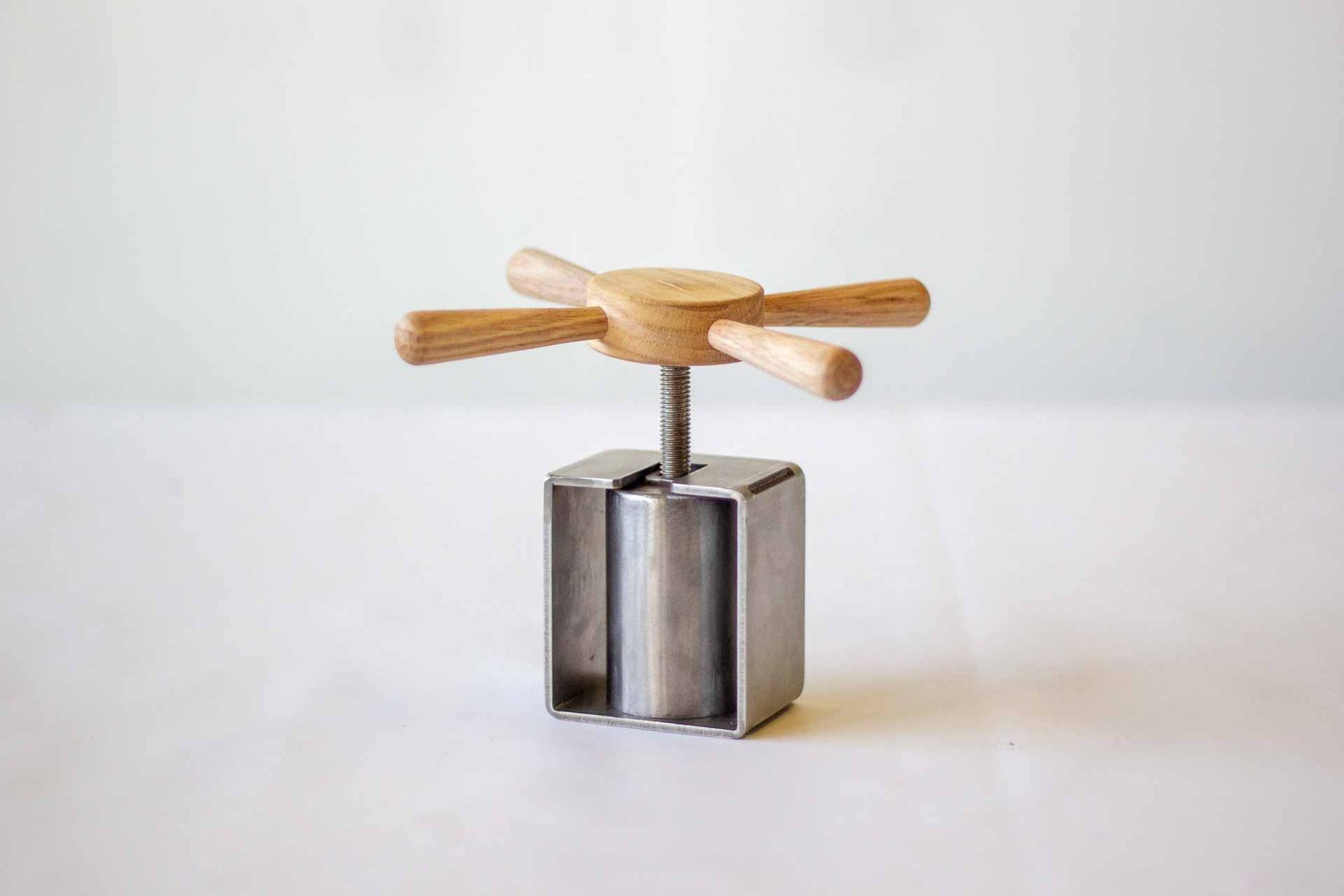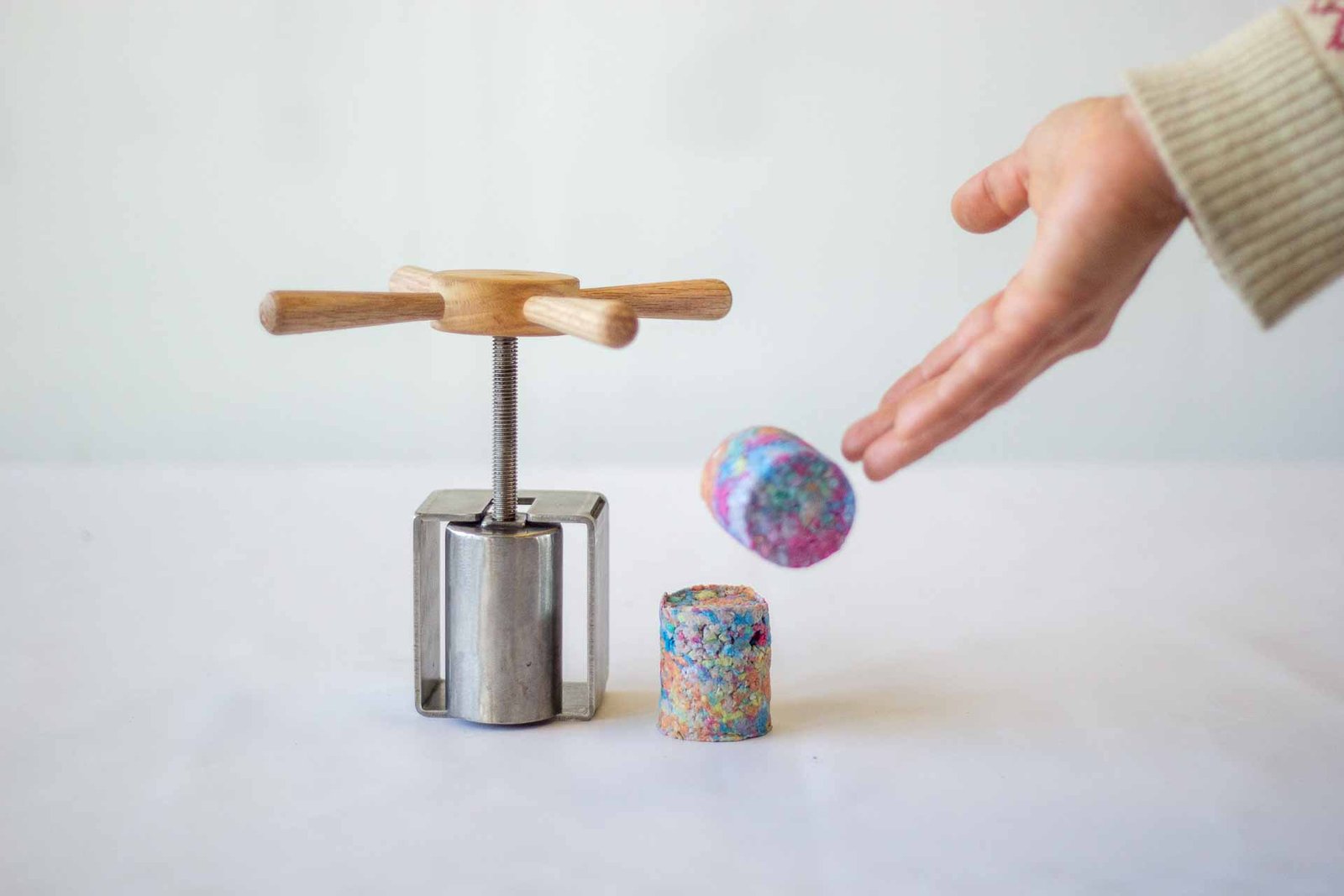Cubcho Round
Original price was: €99.00.€79.00Current price is: €79.00. excl. tax
A Montessori-inspired tool for hands-on and sustainable play for children aged 2 to 12.
CUBCHO is a timeless mechanical press that enables kids to transform paper waste and other materials into unique, colorful and sturdy building blocks.
Description
Cubcho Round creates cylinders up to 8 cm in height, perfect for crafting wheels, faces, rollers, pillars, and more.
For whom is Cubcho?
- 2-12 year old kids, at home or outdoors
- Schools, day cares, art classes and workshops
- Children and adults with special needs
Cubcho grows with your child!
The same tool adapts to different stages of development, allowing your child to use it in new and more complex ways as they grow and their thinking becomes more sophisticated.
Age 2: At this stage, children practice basic skills like filling the tool with materials, figuring out how to open and close it, rotating the handles, and enjoying the different textures. These activities help develop fine motor skills and sensory awareness.
Age 12: Older children use Cubcho for more advanced and creative tasks. They experiment with complex combinations and designs, create their own unique collections of cubes, and make thoughtful choices about materials and colors. This fosters innovation, problem-solving, and artistic expression.
The magic of Cubcho lies in its simplicity. It provides the structure that kids need while offering countless opportunities for self-exploration within that framework.
By allowing a child to perform one simple task – making a cube – we provide a clear boundary within which they can freely explore. This balance helps the little artists to feel secure while encouraging their imaginative play.
The entire process—making the paper pulp, choosing extra materials or colors, designing a unique cube, and building with the cubes afterward—involves a rich learning path where every child discovers and learns at their own level.
Children can start working with Cubcho as early as 2 years old and continue experimenting until the age of 12 or even older. Each cube turns out different and unique, sparking children’s imagination and curiosity, and provoking them to come up with more ideas and “what if” questions.
Kids love Cubcho because it is a real tool that provides a tangible and authentic experience. They enjoy the challenge of figuring out all the steps, adjusting, and learning throughout the process.
Hands-on sensory play often appears messy (and it can be!), which might tempt parents to cut it short. However, sensory play—activities that stimulate any of a child’s senses—plays a crucial role in a child’s health and development. It helps children build cognitive skills and learn about their world.
Activities like messy and sensory play allow children to make their own discoveries about materials and carry out their own mini-experiments, sparking a love for learning and fostering self-discovery and exploration. These activities also help build pride and self-esteem as children take ownership of their creations and accomplishments.
Does it have to be messy?
Don’t worry! Keeping it simple won’t limit your child’s discovery process. Boundaries actually help spark creativity!
Here are a few ideas to get you started:
- Only paper and water: Create plain cubes and let your child color them afterwards with paint, markers, stickers, stamps, and more.
- Paper pulp with natural materials: Experiment with one material at a time, such as coffee grounds, flower petals, or onion peels.
- Paper pulp and colors: Offer a single color and explore its shades and opacity, or provide three primary colors and encourage mixing them to create new hues.
Additional information
| Materials | Stainless steel, wood |
|---|








Reviews
There are no reviews yet.